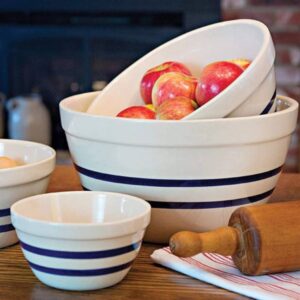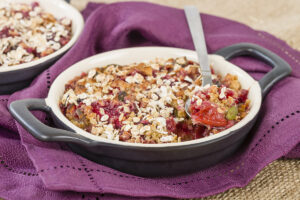Our family has tinkered with making sauerkraut for about a decade now but this season we have become fermentation  fanatics. After attending a couple seminars and reading more from marvelous books from Lehman’s (Making Sauerkraut and Pickled Vegetables, Nourishing Traditions, and Wild Fermentation) we are understanding more of the health benefits and the culinary pleasures of lacto-fermenting foods. So our fridge and root cellar are starting to burst with sauerkraut and all its cousins kim-chi, dill pickles, peach chutney, salsa, dilly beans, corn relish, garlic scapes and more. All of it is still raw and full of amazing enzymes, beneficial bacteria and fresh-from-the-garden goodness to keep us going through the winter months.
fanatics. After attending a couple seminars and reading more from marvelous books from Lehman’s (Making Sauerkraut and Pickled Vegetables, Nourishing Traditions, and Wild Fermentation) we are understanding more of the health benefits and the culinary pleasures of lacto-fermenting foods. So our fridge and root cellar are starting to burst with sauerkraut and all its cousins kim-chi, dill pickles, peach chutney, salsa, dilly beans, corn relish, garlic scapes and more. All of it is still raw and full of amazing enzymes, beneficial bacteria and fresh-from-the-garden goodness to keep us going through the winter months.
Lacto-fermentation is an age-old method of preservation that uses of the action of naturally occuring lactic acid bacteria (LAB.) The LAB produce lactic acid which acts as a preservative plus they partially break down other components in the vegetables making them easier for us to digest and actually increases the nutritional value of many things. Many ancient cultures simply buried their cabbage, veggies or meat in the ground and went back later to recover the fermented product. Fortunately today we have more options available for making our kraut. Glass and ceramic are the materials of choice for fermenting so anything from a simple quart canning jar to a wonderful German crock can fit the bill. We started with quart and half gallon jars, graduated to jars my husband created with airlocks on top and recently added a Lehman’s German crock to our collection.
Lacto-fermentation is an anaerobic process (without oxygen) so it is crucial to keep air away from our food while it is fermenting. A tight lid (ideally a plastic one to prevent rusting) on a canning jar, an airlock (like for wine-making) or the water channel system of the German crocks will all work. You want to choose high quality fresh veggies for your fermenting and the other key ingredients are salt and water. The salt helps with the preservation process plus adds flavor and you want to choose good quality non-iodized salts like celtic salt, Himalayan pink or Real salt for best results. Water it used to make a salt brine for vegetables that are not self-brining and should not be clorinated or floridated as they hinder bacterial action. When using the simple canning jar method as outlined in Nourishing Traditions, you will also need to use a small amount of whey as an inoculant to give the LAB a head start over the aerobic rotting bacteria.
Normally you will allow your concoction to ferment at room temperature for 3-5 days in dark conditions (I wrap a dish towel around the jars and secure with a clothespin) and then transfer it to cooler storage (a refrigerator or root cellar.) With the German crocks which are less mobile, a cool basement is ideal and you want to make sure the water channel stays filled. You can start eating your ferments right away but their flavor will develop best if given several weeks or months. We serve ours as a condiment with our meal and everyone gets a dollup of kraut, several dill pickle slices or a spoonful of dilly beans on their plate. Even with their puckery taste, my kids absolutely LOVE these foods and beg for more. I also am loving hearing interesting sauerkraut stories from customers as I do my Thursday demos at Lehman’s store; stop by sometime and share yours!
Space limits me to give you every particular in this artisan process so here are a few small scale recipes to get you fermenting. I highly recommend Making Sauerkraut and Pickled Vegetables by Klaus Kauffman as an excellent primer to get you started. Happy fermenting!
Basic Sauerkraut (makes 1 quart)
- 1 medium head of cabbage
- 1 Tablespoon sea salt
- 4 Tablespoons whey (omit whey if using a German crock or air-lock system)
- Shred cabbage (for small batches I use my trusty Bluffton slaw cutter but for heavy duty slicing, a wooden slaw cutter is a needed luxury) and mix with salt and whey in a large bowl.
- Pound with wooden mallet or your hands to release juices.
- Press down in a wide mouth quart jar till juices cover the cabbage. I add part of a cabbage leaf on top to help keep things under liquid. The top of the cabbage should be at least 1 inch below the top of the jar.
- Cover tightly (I like the white plastic Ball lids) and keep at room temperature for about 3 days before transferring to cold storage.
To create Kim-Chi, you can spice up your cabbage with garlic, onion, carrots, radish, ginger and hot pepper before fermenting. Let age several months for best flavor. Very tasty and full of healing properties.
Pickled Cucumbers (makes 1 quart)
- 4-5 pickling cucumbers
- 2 tablespoons fresh dill snipped
- 2-3 cloves of garlic
- 1 tablespoon sea salt
- 4 tablespoons whey (omit whey if using a German crock or air-lock system)
- 1 cup of water
- Slice cucumbers either lengthwise or into coins and place in jar.
- Add dill and garlic clove slivers to jar.
- Combine water, salt and whey and pour over cucumbers, adding more water if necessary to cover the cucumbers. The top of the liquid should be at least 1 inch below the top of the jar.
- Cover tightly and keep at room temperature for about 3 days before transferring to cold storage.
Dilly beans
Substitute blanched green beans (either whole or cut in 1 inch lengths) for cucumbers in above recipe. These are one of our family favorites!




























[…] Lehman’s Country Life Filed Under: Modern Survival Tagged With: country life, simple […]
“wild fermentation” is a MUST read!!
I just canned the sauerkraut I fermented in a Lehman’s crock over the past several weeks. Strong stuff but good! (This is my third year making sauerkraut in the crock.)
Just bought the German crock from Lehmans…my 1st batch of kraut begins this weekend!
I also got the German crock from you guys (the one with the water lip seal) and it has been in use all summer. Excellent pickles, kraut, kimchi, hot peppers and more. I really can’t recommend it enough. I was able to make kraut in my small apartment and there was virtually no smell due to the water seal. The fitted stones are also excellent.
Lehman’s, i dont right now. ive been using just quart mason jars to make the kraut, then i put some water in a ziplock baggie and stick it in the top to hold everything under the brine. works well.
i have dreams of fancy ceramic crocks, but its not in my budget right now. :(